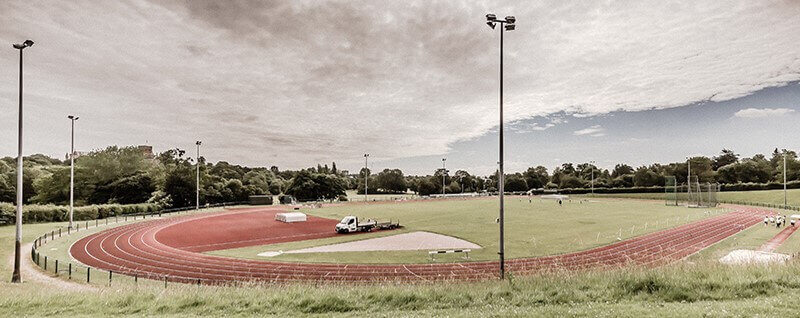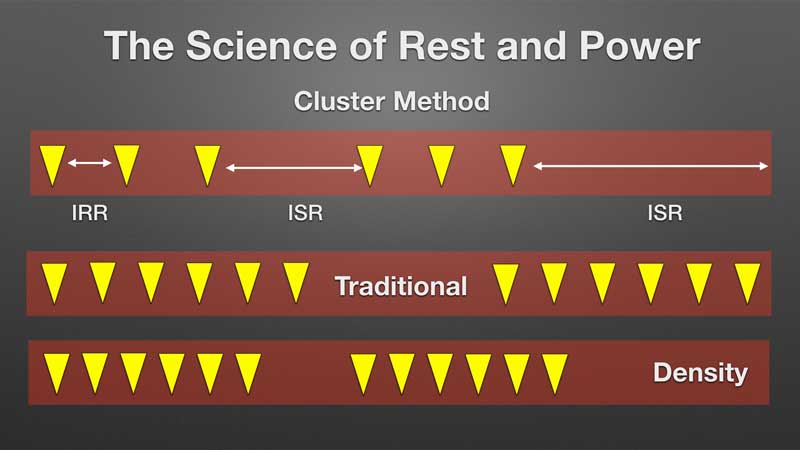When training to improve speed for sprints or for football you will always here about physical strength being a prerequisite in some form or another. And I do agree with this, but just like “Rome” there are many roads that can get us to that destination. As masters Athletes being able to improve our physical strength as we age is a crucial factor to performance.
When thinking about training for the track their are a few things to consider, the most prominent being that we need to improve physical strength and power without adding any unnecessary bulk, especially when you consider that Ground Reaction Force can be up to 7 times body weight whilst sprinting, for every extra KG you carry that can build up fairly quickly, right?
And just like improving spring speed, you need to stress the body often in order to provide the correct amount of stress for adaptation. The problem with this of course being fatigue!
So this is where the use of Pause sets or Cluster Training comes in when lifting weights in the gym. A system of combining max efforts in groups of reps across smaller sets divided by short, incomplete rest periods (a system originally developed to increase volume in Olympic weightlifting training programs while preserving optimal speed bar) can be that stimulus.
By increasing the number of reps performed each set at a given intensity, cluster sets can significantly increase volume while preserving a specific work to rest ratio, namely a specific metabolic impact. In order for that to happen, the number of reps performed per cluster needs to decrease to compensate for the overall increase in volume: buffering by approximately 50% the number of reps per cluster within each set at a given intensity allows to accommodate more work while maintaining the work to rest ratio based on the original study carried out by Haff and colleagues in 2003.
- ATP-PC recovery – The ATP-PC energy system is responsible for energy production for the first 10–15 seconds of maximal exercise. Therefore, it’s important for strength and power events. To fully replenish the ATP-PC system, it takes about three minutes, but initial recovery is much quicker. After 30 seconds, it can be 70 percent recovered. By using short inter-set rest periods, athletes can perform more reps with a heavier weight or more powerful reps with a sub-maximal weight when training for power.
- Post-activation potentiation – Post-activation potentiation (PAP) is an increase in force production of the skeletal muscle following a previous muscular contraction (Sale 2002). The science behind PAP warrants another article, so I won’t get bogged down in it. Essentially, every rep you perform has an excitatory effect on the muscles and nervous system involved. If there is little fatigue, a more forceful contraction can be produced subsequently. This leads to my next point…
- Fitness fatigue theory (lactate) – Any training stimulus has two effects—a fitness effect and a fatigue effect. Your performance is a balance between these two opposing factors (Chiu 2003). PAP takes advantage of the heightened fitness to increase force production, but if you perform a set with many reps, more fatigue will be involved and performance will decrease. So with traditional sets, more fatigue is accumulated in the form of lactic acid, thus you can’t take advantage of the fitness effect or PAP. With cluster training, there is little fatigue, so you can make the most of PAP and each rep should be more explosive than the last (Haff 2008).
Types of clusters—strength
Classic 5 X 1 cluster: Using a load that is about 90 percent of your one rep max (RM), perform one rep, rack or drop the bar, rest 10–15 seconds, and then repeat for five total reps and a total rest of three minutes. Repeat for the desired number of sets (often written as 5(1)). This method has you lifting five reps with what is roughly your 3–4RM and always increases maximum strength.
Power
Research has shown that cluster training may increase force or velocity when training for power (Haff 2003, Haff 2008, Hansen 2011). Cluster training is believed to be most effective when training for power. Common ways of training for power include:
- 4 X 2 cluster: Perform four cluster sets of two reps with ten seconds rest between cluster sets and three minutes rest between sets. The load depends on programming but will normally range from 40–60 percent of your 1RM.
- 5 X 1 cluster: Perform one rep, rest for 30 seconds, repeat for five total reps, and then rest three minutes. Repeat for the desired number of reps.
When to use clusters
Clusters are best used with compound barbell exercises. You could do it with dumbbells, but having to pick the weights up and get set before each cluster set eats into your time and is a nuisance. Ideally, use exercises where you can rack the weight easily (bench, squat) or exercises where you can rest the bar on the floor after each rep (Olympic lifts, dead-lifts). Cluster training is pretty demanding and should only be used with advanced trainers. I prefer to use them if a tough week is planned where I know there is a subsequent de-load planned. Cluster training is a high intensity and high volume technique so program accordingly.
Cluster training is a novel method that can be used for strength, power, and hypertrophy. It can be an exciting new stimulus for athletes and it works. Olympic lifters have been using this technique without even intending to and it certainly hasn’t hurt them! Give some of these techniques a try, and I’m certain that you’ll be one step closer to your goals.
References
- Chiu LZF, et al (2003) The fitness-fatigue model revisited: Implications for planning short- and long-term training. Strength and Conditioning Journal 25(6):42–51.
- Haff GG, et al (2003) Effects of different set configurations on barbell velocity and displacement during a clean pull. Journal of Strength and Conditioning Research 17(1):95–103.
- Haff GG, et al (2008) Cluster training: a novel method for introducing training program variation. Strength and Conditioning Journal 30(1):67–76.
- Hansen KT, et al (2011) Does Cluster Loading Enhance Lower Body Power Development in Preseason Preparation of Elite Rugby Union Players Journal of Strength and Conditioning Research 25(8):2118–26.
- Sale DG (2002) Post-activation potentiation: Role in human performance. Exercise and Sports Science Reviews 30:138–43.
- Schoenfeld BJ (2010) The mechanisms of muscle hypertrophy and their application to resistance training. Journal of Strength and Conditioning Research 24(10):2857–72.
- Verkhoshansky Y (1967) Special Strength Training: Manual for Coaches.




